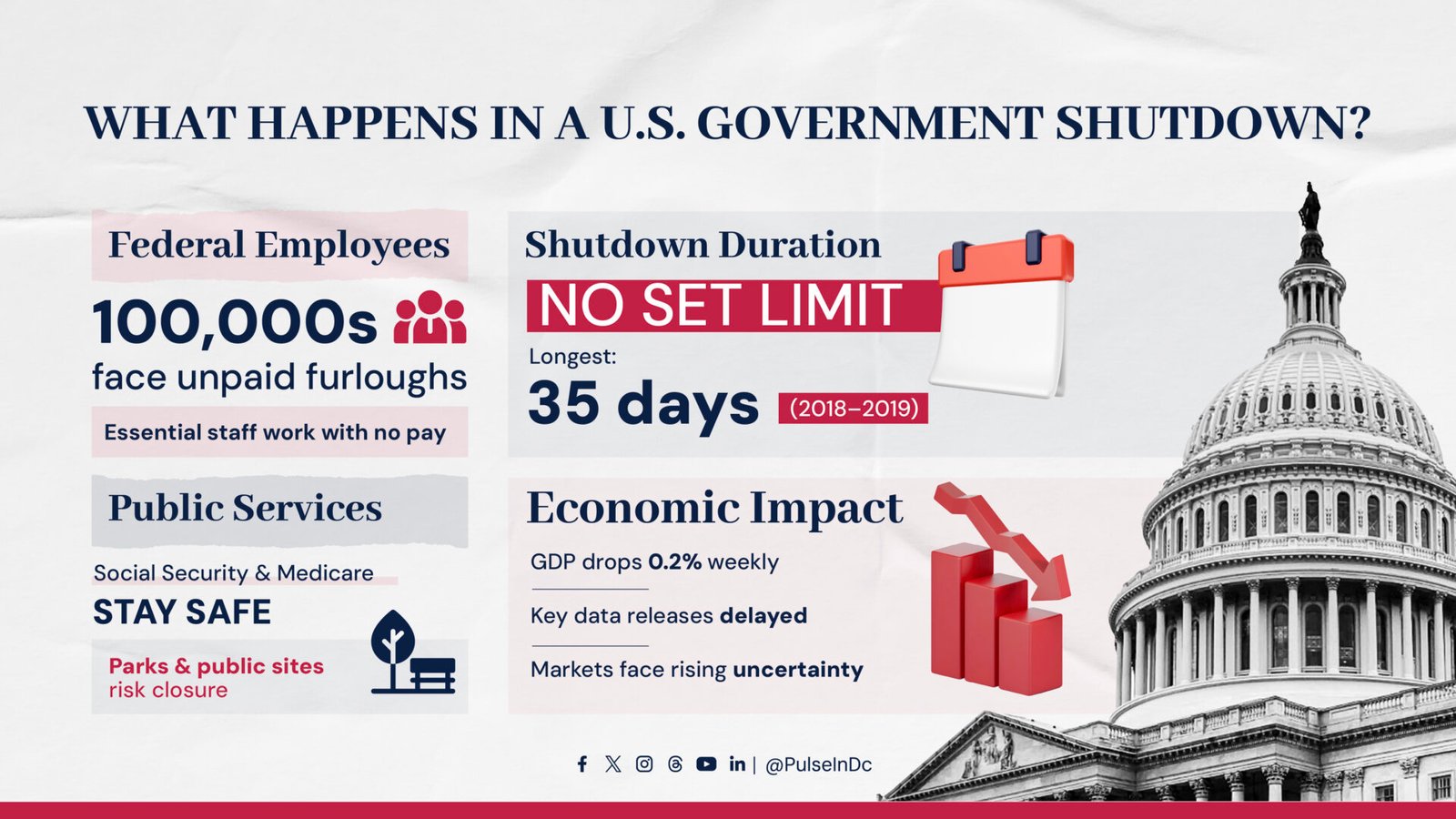
What Happens in a U.S. Government Shutdown?
The United States entered a government shutdown after Republicans and Democrats in Congress failed to reach a budget agreement.
The closure immediately threatens hundreds of thousands of federal workers with furloughs, while others deemed “essential” must continue working without pay until lawmakers strike a deal.
President Trump’s administration has raised the stakes further by directing agencies to consider outright dismissals, a shift from past shutdowns where paychecks were merely delayed.
While Social Security and Medicare benefits remain unaffected, national parks, monuments, and public sites could face closures, sparking frustration for millions of visitors.
Economists warn that the longer the shutdown lasts, the greater the cost—each week of closure is projected to reduce GDP growth by 0.2% while also disrupting critical government data such as jobs reports.
With the last shutdown under Trump in 2018–2019 lasting a record 35 days, concerns are mounting that this one could be just as damaging, threatening worker livelihoods, slowing the economy, and undermining public trust in government.

